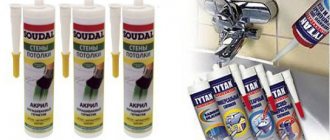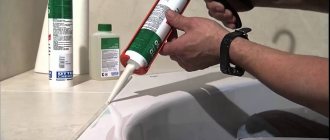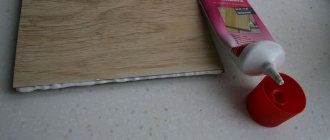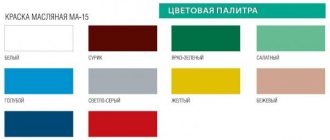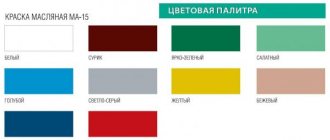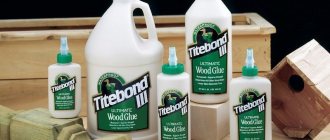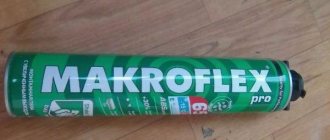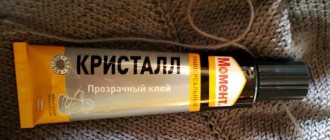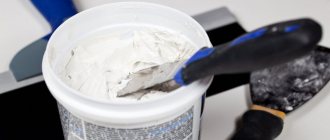Whatever type of construction work you carry out, the sealing stage inevitably comes, which makes cracks and joints impenetrable to moisture, cold and atmospheric influences and protects building structures from mold and mildew. But for each type of work you need to select a suitable sealant.
Where one sealant works perfectly, another may be useless.
If you select even the best quality sealant incorrectly, it can quickly peel off, turn black, and begin to leak moisture. Thus, time, money and effort will be wasted.
In this article, Sika technicians explain how to select sealants for interior and exterior applications according to the required application.
Characteristics of acrylic sealant
A modern product containing acrylic is intended for moisture insulation and sealing of various joints. It is perfect for inexperienced users: it is easy to use, does not harden for a long time, thanks to which the position of the seam can be corrected. This composition is quite elastic, easily adapts to slight vibration, and after drying it can be plastered or painted.
Acrylic sealants are used to fill gaps and cracks: you just need to pour them inside and wait until dry. The material retains its characteristics indoors and is not afraid of temperature fluctuations or changes in humidity. Street conditions are less favorable for such compositions: in severe frost they (in the absence of special ingredients) become hard and sometimes crack.
Most acrylic sealants are waterproof, but they lose their properties when constantly exposed to moisture Source mirsmazok.ru
Technical specifications
The quality of acrylic sealants is assessed by an important indicator: elongation at the maximum possible stress. When a product is stretched while simultaneously subjected to excessive stress (more than the maximum permissible value), it will begin to become irreversibly deformed. As the number increases, the elasticity of the acrylate sealant increases. High-quality compounds have an indicator of 10% and above. When the mark on the package is 11%, they are already allowed to be used outdoors. Additionally, it is worth noting the following characteristics of acrylic-based sealants:
- permissible seam width is 0.6-5 cm, optimal thickness is correspondingly half that;
- operating temperature – from -20°С to +70°С;
- film formation time – 15 minutes;
- the period of adhesion of acrylic sealant to the base is no more than one hour;
- Drying time – 24 hours at humidity 50%, temperature 23°C;
- frost resistance (for a separate group) – more than five freeze-thaw cycles;
- break rate – 500%.
After curing, the acrylic sealant acquires optimal strength and resistance to deformation loads Source i.ytimg.com
Varieties
Depending on the characteristics of operation and chemical composition, modern acrylic sealants are divided into groups.
Frost-resistant
The products are resistant to precipitation, aggressive external influences, and negative temperatures. They have significant elasticity and retain their integrity in the event of freezing. Most products are recommended to be used at -20°C and above, but there are more frost-resistant sealing mixtures. With their help, it is possible to process seams between logs and concrete slabs.
Frost-resistant acrylic sealant can be used for external repair and construction work in regions with very cold winters Source kraska.guru
Moisture resistant
They differ in their composite composition (silicon and rubber are added) and often contain other components that significantly improve the quality of the product. They are well suited for different purposes in rooms with high humidity (bathroom, kitchen). Compared to ordinary acrylic joint sealants, moisture-resistant products are better able to withstand temperature fluctuations and have fairly high adhesion to other building materials.
Moisture-resistant acrylic sealant is not intended for use in conditions of constant contact with water Source kraska.guru
Non-moisture resistant
Suitable only for interior work in conditions of normal or low humidity. They are often used when performing minor repairs, gluing baguettes and baseboards. Such products are recommended for use on concrete, brick, and wooden surfaces.
Non-moisture-resistant acrylic sealant is intended for rooms with normal humidity, is highly durable and resistant to fading Source elnik.com.ua
Brief conclusion
From the above, we see: you shouldn’t pay attention to the beautiful names of acrylic sealants that marketers come up with, but you should pay attention to its technical characteristics ! The narrower the scope of application (highly specialized), the more expensive the sealant is on the market, although the sealant may be no different from ordinary household sealant. The purpose of such names is not to help with choice, but to earn more.
The price of acrylic sealant, compared to other sealants, is one and a half times cheaper or more, but this does not indicate poor quality of the material, but only that more time is now being devoted to the development of acrylic sealants using new raw materials, formulations and new technologies. In addition, the demand for acrylic sealants is constantly growing.
Color variety
You can often see white or colorless acrylic sealants in hardware stores. They are extremely popular among users because they fit perfectly with various plumbing fixtures and tiles. It is important to note that transparent compounds are hardly noticeable on treated surfaces. If you want to choose a sealing material that matches the color of the base, you need to buy a pigmented product of the desired color. There are also products in wood shades: oak, walnut, cherry, wenge and others.
A wide range of colors of acrylic sealants for wood makes it easy to choose the material that matches the color when processing any base. Source st3.stblizko.ru
What to do if mold returns
It happens that even after quality measures have been taken to get rid of mold and seal all joints and seams, the problem reappears. In this case, you will have to find a source of fungal growth, which, as a rule, is located under the tiles, in the deep layers of the seam, where the sealant did not get into, or other hard-to-reach places. In such a situation, you will have to completely clean the surface of the sealing material as follows:
- take a utility knife, carefully cut the silicone or acrylic on both sides of the seam,
- pick up the sealant and pull it out of the groove entirely, then throw it away immediately,
- clean out debris, dirt, dust from the seam with a knife,
- disinfect the problem area with isopropyl alcohol or anti-mold compounds 2-3 times,
- let the joint dry (usually a day is enough),
- reapply sanitary sealant with anti-mold additives.
Advantages and disadvantages of acrylic sealants
Using acrylic in repair work has a number of advantages. The main advantages of products containing it are:
- affordable price;
- wide choose;
- easy to use;
- the ability to correct defects;
- environmental friendliness;
- fire safety;
- do not turn yellow after a while;
- high adhesion to other building materials;
- Painting, puttying, mechanical processing of the seam is allowed;
- good vapor permeability;
- UV resistance;
- the ability to update damaged areas.
The main disadvantage of acrylic sealant is its intolerance to frequent contact with water. Being in a very humid environment, it gradually dissolves, and the seam accordingly deteriorates. Moisture-resistant materials can come into contact with moisture only after final drying. But with constant exposure to liquid, they lose their characteristics over time.
Vapor permeability is an important characteristic of acrylic sealant, which does not allow moisture to accumulate indoors Source omega-gc.ru
Mold prevention
In order not to encounter mold growth in the bathroom again, even after sanitizing and applying sealant, a number of preventive measures must be followed. To begin with, it is imperative to equip a high-quality ventilation system, at the same time regularly ventilating the room. Otherwise there will always be high humidity there. Dripping faucets, leaking gaskets, and broken shower heads need to be repaired or replaced.
If the walls freeze, you will have to insulate them, otherwise the fungus will begin to populate the room again. To prevent mold from getting into the bathroom from neighbors, all cracks, gaps and cracks should be well sealed, and a good antifungal sealant will also come in handy here. These measures will seriously reduce the risk of the adverse effects of mold on the human body and the destruction of finishing materials in the bathroom.
Where are they used?
Acrylic sealants do not contain solvents or harmful components, which is why they are best suited for interior work. Moreover, they can be applied in a closed room. There is no need to use protective equipment.
Acrylate sealants are often used for:
- sealing joints between beams and logs;
- filling joints between concrete elements;
- sealing the places of contact of individual elements with walls;
- replacing construction adhesive (for example, when attaching skirting boards to shelves);
- gluing fillets, baguettes, as well as high-quality sealing of seams between the latter and the base.
Advice! Acrylic sealant can be used for installing ceiling tiles and filling gaps.
Acrylic sealant is often used to seal the places where individual objects come into contact with walls Source gidpokraske.ru
Features of application
The process of applying sealing material does not require special knowledge or tools. You just need to properly prepare the surface of the base: clean it from the accumulation of dirt, grease, and all kinds of old coatings, then dry it thoroughly. When you need to form a wide seam, you must purchase a sealant (for example, polyethylene cord) in advance. It will minimize the thermal conductivity of the connection, make it more reliable, and also significantly reduce material consumption (up to 70%).
Acrylic sealant can be applied without using gloves (it is harmless to the skin). However, it cannot be diluted with any liquid (including solvents). This will significantly reduce the quality characteristics of the mixture and lead to cracking of the seam.
You can apply the composition with a special gun: it is easy to insert cartridges and tubes into it. It is better to spread the sealing agent from a bucket with a narrow spatula; from a tube, squeeze it out in portions onto the required area.
After applying the acrylic sealant, it can be given the desired shape within another quarter of an hour. After the specified time, a polymer film begins to form, so repairing the seam will be difficult and impractical. The hardening of such material continues for a day; at a low temperature, the process is delayed for several more hours.
Consumption of funds
The required amount of acrylic sealant depends on the size of the future seam. In order to calculate it, you should multiply the depth and width of the gap. The result will be an approximate volume of material: it will show the required weight of the product (in grams) per 1 meter.
In the case where the joint is triangular in shape (instead of the usual rectangular), the final value should be divided by two. As practice shows, for 10 m of medium-thick seams, 250 g of sealing compound is sufficient.
Removing traces
It often happens that acrylic sealant accidentally gets on different surfaces. If it has not yet hardened, it is easy to remove. To do this, you need to thoroughly wash the base with soapy water.
Removing hardened material requires the use of a razor or sharp knife. Cut off the product layer by layer and very carefully so as not to damage the affected object. Residues should be rubbed off with fine sandpaper, steel wool or pumice. From delicate surfaces, such a composition is carefully removed with a wooden scraper. After finishing work, wash the cleaned base with a gentle detergent and then dry it.
Fresh traces of acrylic sealant can be easily washed off with water or a gentle detergent Source kraska.guru
How to choose a sealant
Usually in stores you can find universal sealing agents, as well as separately for windows and doors. In reality, the difference between them is minimal.
When processing smooth surfaces, it is important to additionally take the following measures: apply a special primer with abrasive particles to the base or walk over it with sandpaper. As a rule, such preparatory procedures are applied to various types of plastic.
Acrylic sealant is suitable for application to window structures: after final drying, it can be coated with suitable paint.
When purchasing a sealant for the kitchen or bathroom, it is necessary to take into account its resistance to moisture and the presence of fungicides in the composition.
When sealing joints in aquariums and shower stalls, it is recommended to use a sealant containing silicone.
In order to seal stoves, fireplaces, and other heating structures, it is better to purchase silicone or silicate compounds that are resistant to the influence of excessively high temperatures.
Popular brands
There are different sealants in stores, the most popular are the following compositions:
- “Universal” from Novbytkhim. An inexpensive product based on acrylate dispersion and mineral filler. After drying, it forms a moisture-resistant, rubber-like white seam that does not turn yellow over time. The sealant is non-toxic and can withstand temperatures of –30…+70 degrees. Designed for repair work indoors and outdoors.
- Zigger Acryl. Plastic, elastic means for compacting various substrates. Includes a freezing point depressant additive. It is thixotropic and can be applied to vertical bases and ceilings.
- "Moment Acrylic Universal". It is used for strengthening and sealing cracks and crevices in windows, for sealing joints between plumbing fixtures and floors and walls. Can be applied to the junctions of metal sinks and walls, countertops in the kitchen. Retains properties at temperatures of –50...+150 degrees, is neutral with respect to alkalis, oils, and remains durable for several years.
- Belinka Beldom Acryl. Acrylate sealant that is suitable for all building materials. Sufficiently elastic, withstands deformation within 5–10%. Does not wear out, is resistant to sunlight and weathering.
- Loctite PL-S50. Universal frost-resistant composition based on acrylic water dispersion. Designed to strengthen weak joints between concrete, brick, wood, plaster, and ceramics. Ideal for grouting cracked surfaces. Suitable for painting and plastering.
- Makroflex FA. Freeze and thaw resistant sealant. Suitable for external and internal work. The seam can be painted an hour after drying. Can be used for all types of seams with slight deformation and stretching.
- PENOSIL Premium Acrylic Sealant. A universal water-based acrylic composition used for filling joints and cracks in low-moving joints. It is odorless, easy to apply, and after drying it can be sanded and coated with paint or varnish. It is quite moisture resistant and can easily withstand contact with water 5 hours after use.
There are other acrylic-based sealants in construction stores: Titan, Krass, Master Tex, Pufas, Kim Tek and others. There is no need to save money and buy the cheapest composition. Products from well-known brands are of consistently high quality and highly effective. Working with acrylic sealants is easy and convenient; they will become reliable helpers in the home and on construction sites.
Differences between acrylate sealant and silicone
Sealing agents containing acrylic or silicone vary in properties and methods of use:
- After final hardening, acrylic seams can be painted in various colors with any water-based acrylate or latex paint. If necessary, treated areas can be easily restored and locally updated. The coloring composition does not adhere well to the silicone base.
- Acrylic sealant can be processed using mechanical methods: drilling, grinding. Silicone in the event of such an impact can completely separate, damaging the connection.
- The elasticity of acrylic is lower than that of silicone. Materials based on the latter are more plastic, give minimal shrinkage, and stretch well (without damage).
- Acrylic sealant is vapor-permeable, silicone is airtight. Therefore, the first does not have a negative effect on the microclimate inside the room.
- The moisture resistance of acrylic is significantly lower than silicone, a completely waterproof material that resembles rubber in its properties. Acrylate products are water-based, so they are subject to gradual dissolution.
- Acrylates are characterized by significant adhesion to porous building materials and are excellent for wooden and concrete bases. On the eve of sealing, smooth surfaces must be sanded to improve the quality of adhesion.
- Regular acrylic sealant costs less than silicone. Typically the difference is about 40%.
- The color range of acrylate products is significantly richer. If necessary, it is possible to select a suitable material of any color, including various types of wood. Silicone compounds are produced only in white, grayish, black, and red colors.
- Silicone lasts up to twenty years. Acrylic begins to lose its properties earlier; after a while it can dry out.
- Acrylates are environmentally friendly: safe for human health and do not harm nature. Silicone sealants made with acids emit an unpleasant odor, which limits their use.
Acrylic joint sealant is best suited for application indoors where the humidity level does not exceed normal values, provided there is no contact with liquid. This product is considered indispensable when the seam is planned to be painted. It is often used to eliminate cracks in window or door structures and seal plumbing fixtures. Silicone products are suitable for external use, bathrooms, sealing the walls of aquariums, and other items in contact with water. However, they cannot be used for processing concrete, stones, and metal bases.
Causes of mold
Black mold is a common problem in the bathroom. This microorganism belongs to fungi and spreads throughout the house through spores - microscopic particles that fly freely around the rooms. Most often, mold appears near the bathtub, shower, in seams, between the wall and plumbing - where moisture regularly accumulates. Without emergency measures, mold spores can penetrate into other rooms and appear on windows, in the kitchen and other damp places. They are inhaled by humans, harming their health, causing lung diseases and allergies.
The main reason why bathroom walls become moldy is excessive moisture. Particularly favorable conditions for mold are created by leaking taps, wet laundry, and lack of regular room ventilation. If there is no good ventilation, the fungi multiply even more actively. Additional risk factors for mold development include:
- poorly insulated, freezing walls,
- insufficient sealing of seams between tiles, panels,
- low quality finishing materials,
- lack of sunlight (UV rays kill mold).
